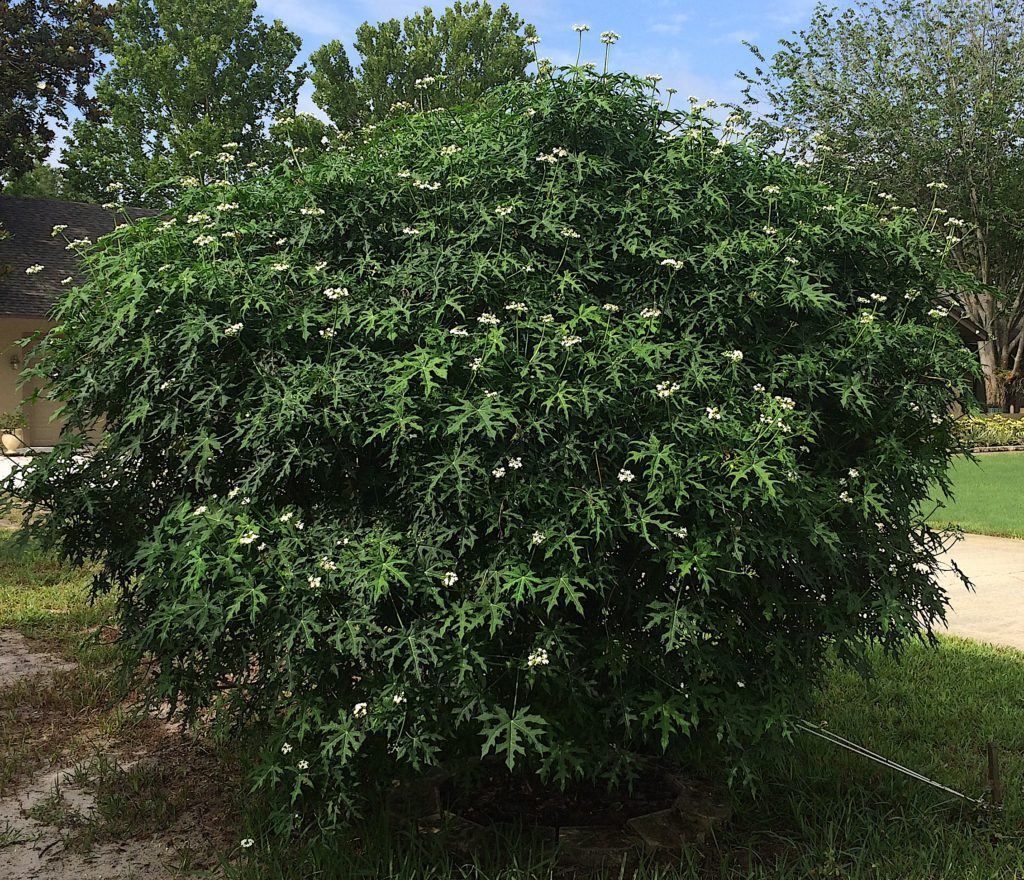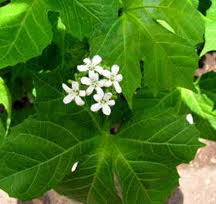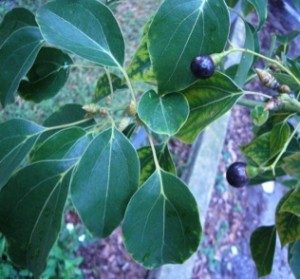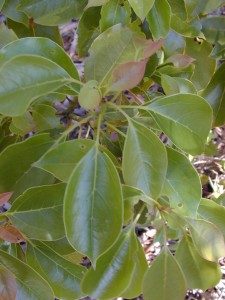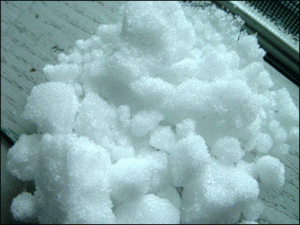Dandelion Burgers from Forage Ahead
1 cup packed dandelion petals (no greens)
1 cup flour
1 egg
1/4 cup milk
1/2 cup chopped onions
1/4 tsp salt
1/2 tsp garlic powder
1/4 tsp each basil and oregano
1/8 tsp pepper
Mix all ingredients together. The batter will be goopy. Form into patties and pan fry in oil or butter, turning until crisp on both sides. Makes 4-5 very nutritious vegetable burgers. No, they don’t taste like hamburger, but they ain’t bad.
Dandelion Blossom Bread
2 cups flour
2 tsp baking powder
1/2 Teaspoon salt
1 cup dandelion blossoms, all green sepals and leaves removed
1/4 cup oil
4 Tablespoons honey
1 egg
1 1/2 cups milk
Combine dry ingredients in large bowl, including petals making sure to separate clumps of petals. In separate bowl mix together milk, honey, oil beaten egg. Add liquid to dry mix. Batter should be fairly wet and lumpy. Pour into buttered bread tin or muffin tin. Bake 400F. For muffins 20-25 min, bread for bread up to twice as long. Test for doneness
MORE DANDELION RECIPES, by Rose Barlow
Cream of Dandelion Soup
4 cups chopped dandelion leaves
2 cups dandelion flower petals
2 cups dandelion buds
1 Tbsp butter or olive oil
1 cup chopped wild leeks (or onions)
6 cloves garlic, minced
4 cups water
2 cups half-n-half or heavy cream
2 tsp salt
1. Gently boil dandelion leaves in 6 cups water. Pour off bitter water. Boil gently a second time, pour off bitter water.
2. In a heavy-bottom soup pot, sauté wild leeks and garlic in butter or olive oil until tender.
3. Add 4 cups water.
4. Add dandelion leaves, flower petals, buds, and salt.
5. Simmer gently 45 minutes or so.
6. Add cream and simmer a few minutes more.
Garnish with flower petals.
Pumpkin-Dandelion Soup
Prepare in advance:
1 large handful Dandelion greens:
Chop leaves into bite-sized pieces. Cook in boiling water until tender. Pour off water and taste. If they seem too bitter for your taste, boil again and strain.
1 small pumpkin:
Bake whole pumpkin on baking sheet at 350° for 1 hour or until completely soft, so that you can put a fork or knife easily through it. Let cool. Cut in half and discard seeds. Rind will peel easily.
1 medium to large onion, chopped
6 cloves garlic, minced
2 Tbsp. butter or olive oil
6 cups water
4 cups mashed pumpkin, prepared as above
1 cup heavy cream
½ tsp nutmeg
1½ tsp salt
1. Sauté onion and garlic in oil or butter in a heavy-bottomed soup pot.
2. Add 6 cups water
3. Add dandelion greens and pureed pumpkin to soup. Stir well.
4. Add salt. Cook at a gentle simmer for 30 minutes.
5. Just before serving add 1 cup heavy cream and ½ tsp nutmeg.
Dandelion Egg Salad
4 hard-boiled eggs
2/3 cup dandelion greens, chopped and cooked
1 tsp horseradish
1 Tbsp fresh chives
½ cup mayonnaise
1. Chop eggs coarsely.
2. Add Dandelion greens, chives, and horseradish. Mix gently.
3. Add mayonnaise and mix just enough to coat ingredients.
Dandelion Pasta Salad
3 cups cooked pasta
1½ cups diced tomatoes, drained
1 cup dandelion greens, pre-cooked
2 wild leeks, minced, greens and all or 2 Tbsp minced onions
8 olives, sliced
2 Tbsp vinegar
1 Tbsp olive oil
½ tsp salt
Split Pea-Dandelion Bud Soup
1 cup split peas
1 tsp salt
6 cups water
1. Simmer split peas for 1½ to 2 hours until done.
2. Sauté in 2 Tbsp butter:
½ cup onions, chopped
4-5 cloves garlic, minced
½ cup celery, sliced thin
2 cups dandelion buds
½ tsp basil
½ tsp sage
½ tsp savory
3. Add the sauté to split pea broth.
4. Simmer slowly ½ hour or so.
5. Just before serving add:
1 cup milk
1-2 cups cubed cheese
Garnish with dandelion blossom petals and this hearty soup is fit for the finest table!
Dandelion Blossom Syrup
This is a traditional recipe passed down from the old world Europeans. I use it as a substitute for honey in any recipe that I’m trying to make wild.
1 quart dandelion flowers
1 quart (4 cups) water
4 cups sugar
½ lemon or orange (organic if possible) chopped, peel and all
Note: The citrus is optional, it will give the syrup an orangey or lemony flavor. If you want the pure dandelion flavor, you can skip the citrus. I make it both ways each year.
1. Put blossoms and water in a pot.
2. Bring just to a boil, turn off heat, cover, and let sit overnight.
3. The next day, strain and press liquid out of spent flowers.
4. Add sugar and sliced citrus and heat slowly, stirring now and again, for several hours or until reduced to a thick, honey-like syrup.
5. Can in half-pint or 1 pint jars.
This recipe makes a little more than 1 pint. I usually triple or quadruple this, and I make more than one batch when the blossoms are in season to have enough for the year. The syrup makes great Christmas presents, so make plenty!
Dandelion Baklava (as a Greek purist I must object, but try the delicious recipe anyway.)
This recipe involves using fillo leaves, which are extremely thin sheets of pastry dough, usually sold frozen in long thin boxes. Fillo can be fussy to work with but the results are so worth it! It’s actually a lot more forgiving than it seems, so don’t be afraid to try it!
1/2 box fillo leaves
1 stick butter
2 cups finely chopped hickory nuts (try walnuts or pecans)
1 tsp sugar
1/2 tsp cinnamon
1/2 tsp nutmeg
3/4 cup Dandelion Blossom syrup
1. Combine nuts with sugar and spices
2. Melt butter
3. Layer 8 sheets fillo into a buttered 9×13 pan, brushing every other sheet with butter using a pastry brush.
4. Sprinkle evenly with 1/2 of the nut mixture.
5. Layer 8 more sheets. Sprinkle the rest of the nut mixture.
6. Layer the rest of the fillo sheets, brush the top layer generously with butter.
7. Cut carefully into 30 squares (6×5) with a sharp knife before baking.
8. Bake at 375 for about one-half hour. when slightly browned, remove from oven.
9. Pour room temperature Dandelion Blossom syrup over the hot baklava, while it is still piping hot.
Note: Fillo leaves used to come with two packages per box, sized for 9×13 pans. Lately it’s been all in one package and sized much bigger, so it is necessary to cut the stack of leaves in half before beginning. Half-sheets fit the 9×13 pans nicely.
Dandelion Blossom Cake
2 cups flour
2 tsp baking powder
1½ tsp baking soda
1 tsp cinnamon
1 tsp salt
1 cup sugar
1 cup Dandelion Blossom Syrup
1½ cups oil
4 eggs
2 cups Dandelion blossom petals
1 can crushed pineapple
½ cup walnuts
½ cup coconut
1. Sift together dry ingredients.
2. In separate bowl, beat sugar, dandelion syrup, oil and eggs together until creamy.
3. Add pineapple, walnuts, and coconut, and mix well.
4. Stir dry ingredients into the mixture until well blended.
5. Pour batter into a greased, 9×13 cake pan and bake at 350° for about 40 minutes.
Frosting
1 8-oz package cream cheese, room temperature
1 cup powdered sugar
1 or 2 Tbsp milk
Dandelion Blossom Pancakes
1 cup white flour
1 cup cornmeal
1 tsp salt
2 tsp baking powder
2 eggs
¼ cup oil
½ cup Dandelion Blossom syrup or honey
2 cups milk
1 cup Dandelion blossom petals
1. Mix dry ingredients first.
2. Add wet ingredients and mix together thoroughly (Note: the secret of keeping pancake batter from getting lumpy is to be sure to add all the wet ingredients before mixing.)
3. Adjust consistency by adding a little more milk or a little more flour if it’s too thick or thin. Pancake batter should be thin enough to pour, but not runny.
4. Cook on oiled grill.
5. Top with butter and Dandelion Blossom syrup.
Dandelion Cornbread
1 cup cornmeal
1 cup white flour
2 tsp baking powder
¾ tsp baking soda
1 tsp salt
2 large eggs
½ cup Dandelion Blossom syrup (or honey)
¼ cup oil or butter
1 cup milk (buttermilk is best!)
1 cup Dandelion blossom petals
1. Mix dry ingredients together.
2. Add all the rest of the ingredients and blend until smooth.
3. Pour batter into a 9×9 pan, or 10-inch cast iron frying pan.
4. Bake at 375° for 25 minutes.
5. Serve hot with butter and Dandelion Blossom syrup.
Dandelion Mustard
Homemade mustard is incredibly easy to make and endless in variations and possibilities. Making them “wild” involves preparing an herbal vinegar ahead of time, and in the case of Dandelion Mustard, I also use Dandelion Blossom Syrup and fresh greens.
1 cup yellow mustard seeds (whole)
1 1/4 cups Dandelion vinegar
1/2 cup Dandelion Blossom syrup
1 cup pureed fresh Dandelion greens
3 cloves garlic, minced
3/4 tsp salt
1. Soak the mustard seeds in the Dandelion vinegar for several hours or overnight.
2. Add the rest of the ingredients.
3. Let it all sit together in a covered container for several days to mellow.
4. Put in small jars (1/4 pints work nicely).
Note: Mustard keeps well in the fridge for many months or you can can it in a boiling water bath for 10 minutes to seal.
Dandelion Vinaigrette
This recipe involves having some pre-made Dandelion products but it is delicious beyond belief and is guaranteed to convict any skeptic about the culinary virtues of Dandelion.
1 1/2 cup olive oil
3/4 cup Dandelion vinegar
4 cloves garlic
1/2 tsp salt
2 Tbsp Dandelion Mustard (or Dijon)
3 Tbsp Dandelion Blossom syrup
2 cups fresh, chopped Dandelion greens
Whiz everything together in a blender or food processor.
Dandelion Chai
Chai is a Middle Eastern word that means “tea” but here in America we’ve adapted the term to mean a very spicy tea made with milk and sweetener.
1 cup roasted Dandelion root
6 Tbsp Fennel or Anise seed
36 green Cardamom pods
72 Cloves
6 Cinnamon sticks
2 Tbsp dried Ginger root
1½ tsp black peppercorns
12 Bay leaves
1. Add 1 Tbsp tea mixture for each cup of water.
2. Simmer 5 minutes, then let steep for 10 minutes.
3. Add 1 Tbsp honey or brown sugar (or dandelion syrup) per cup.
4. Add 2 Tbsp milk or cream per cup.
5. Gently reheat and serve.
Dandelion Chai 2
This chai is not as spicy as the first recipe but actually has a more ‘chocolatey’ flavor, kind of like an herbal hot chocolate.
2 cups roasted Dandelion root
½ cup Cinnamon bark
½ cup Ginger root
½ cup Cardamom seeds
½ cup Star Anise
Honey
Milk
1. Use 3 Tbsp per 2 cups water. Simmer gently 10 minutes.
2. Add 1 cup milk and 1 Tbsp honey and heat through but don’t boil.
Serve hot or iced.
Warm Winter Spice Tea
1 cup roasted Dandelion root
½ cup dried Orange Peel
½ cup Cinnamon bark
¼ cup dried Ginger root
Use 1 Tbsp per cup water. Simmer gently 10-15 minutes. Sweeten with honey, if desired.
Roasted Dandelion Root Coffee Ice Cream
Here’s a recipe for the really adventurous from the Herbfarm :
2 ½ cups heavy cream
1 ½ cups half-and-half
1 ¼ cups sugar
5 egg yolks
1. Grind Roasted Dandelion Roots roasted Dandelion roots into a powder using a coffee mill and sifter.
2. Place cream, half-and-half and sugar in a medium pot (double boiler might be best, or perhaps a crock pot). Bring it just barely to a simmer, stirring to dissolve the sugar.
3. Add Roasted Dandelion Root powder. Maintain heat at a bare simmer, be sure not to boil.
4. Let the roots steep this way for 45 minutes.
5. Strain out and discard root material.
6. Whisk up egg yolks in another pot. Gradually add the warm Dandelion Root cream.
7. Heat gently and stir until sauce thickens enough to coat the back of a spoon.
8. Strain one more time and chill.
9. Freeze in an ice cream machine according to directions.
Dandelion and burdock beer
1 lb Young nettles
4 oz. Dandelion leaves
4 oz. Burdock root, fresh, sliced
-OR-
2 oz. Dried burdock root, sliced
1/2 oz. Ginger root, bruised
2 each Lemons
1 g water
1 lb +4 t. soft brown sugar
1 oz. Cream of tartar
Brewing yeast ( see the manufacturer’s instructions for amount)
Dandelion and burdock beer preparation:
1. Put the nettles, dandelion leaves, burdock, ginger and thinly pared rinds of the lemons into a large pan. Add the water.
2. Bring to a boil and simmer for 30 mins.
3. Put the lemon juice from the lemons,1 lb. sugar and cream of tartar into a large container and pour in the liquid thru a strainer, pressing down well on the nettles and other ingredients.
4. Stir to dissolve the sugar.
5. Cool to room temperature.
6. Sprinkle in the yeast.
7. Cover the beer and leave it to ferment in a warm place for 3 days.
8. Pour off the beer and bottle it, adding t. sugar per pint.
9. Leave the bottles undisturbed until the beer is clear-about 1 week.
Dandelion Soft Drink
This recipe will make a strong syrup which will then need to be watered down with soda 1:4. Heat 1.5 litres of water in a pan, when boiling add:
* 2 teaspoons fine ground dandelion root (Might need a mortar & pestle)
* 1.5 teaspoons fine ground burdock root (Might need a mortar & pestle)
* 5x 50p sized slices of root ginger
* 1 1/2 star anise
* 1 teaspoon of citric acid
* Zest of an orange
Leave that little lot to simmer for 15-20 minutes, it will smell a lot like a health food shop, then strain through a tea towel, muslin isn’t really fine enough. Whilst the liquid is still hot you need to dissolve about 750g sugar. If you prefer is sweeter or ‘not-sweeter’ adjust the sugar. If you’re finding the drink a bit flavourless simply add more sugar, it accentuates the flavours of the roots and anise.
In the summer I mix it with plenty of ice and stir through borage flowers for the ultimate English soft drink! Enjoy.

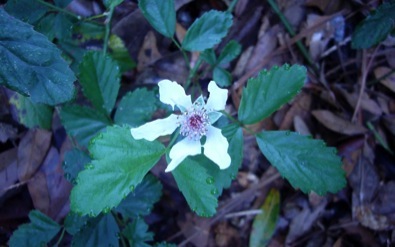
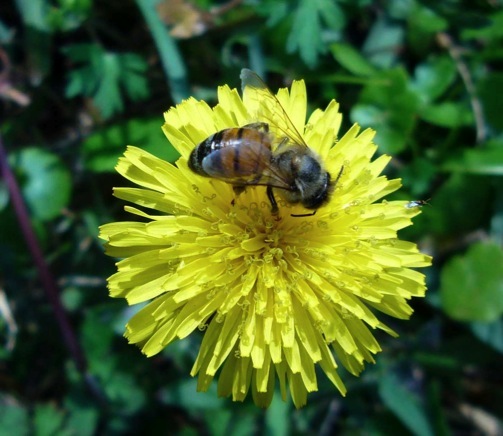
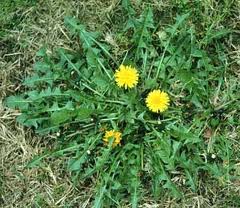
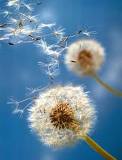
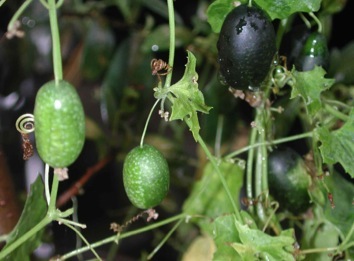
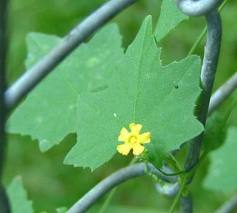
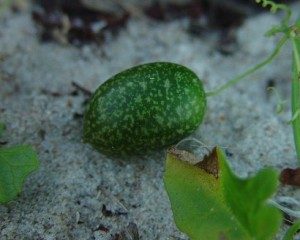
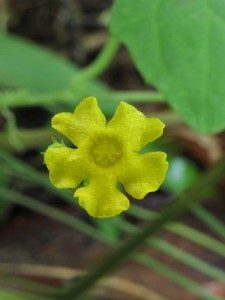
![DSCN0050[2]](https://www.eattheweeds.com/wp-content/uploads/2017/09/DSCN00502-300x225.jpg)
